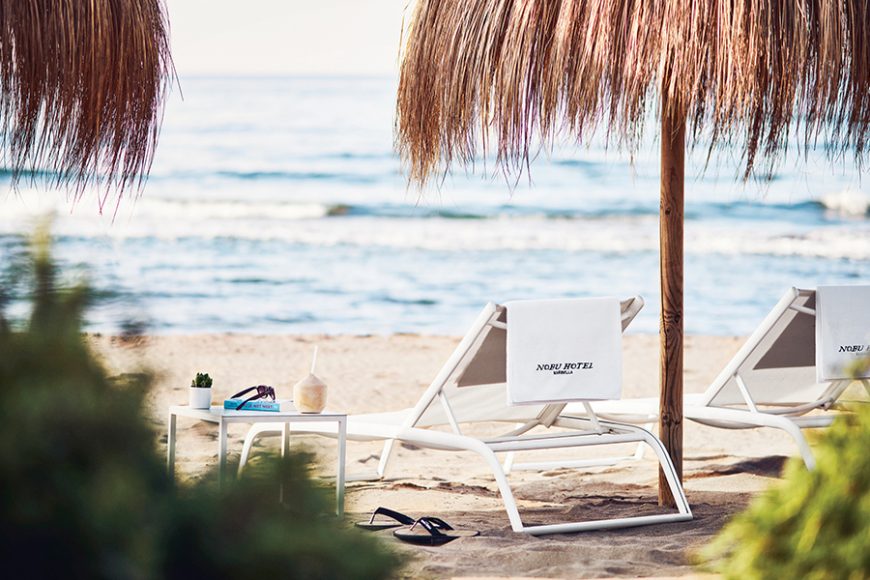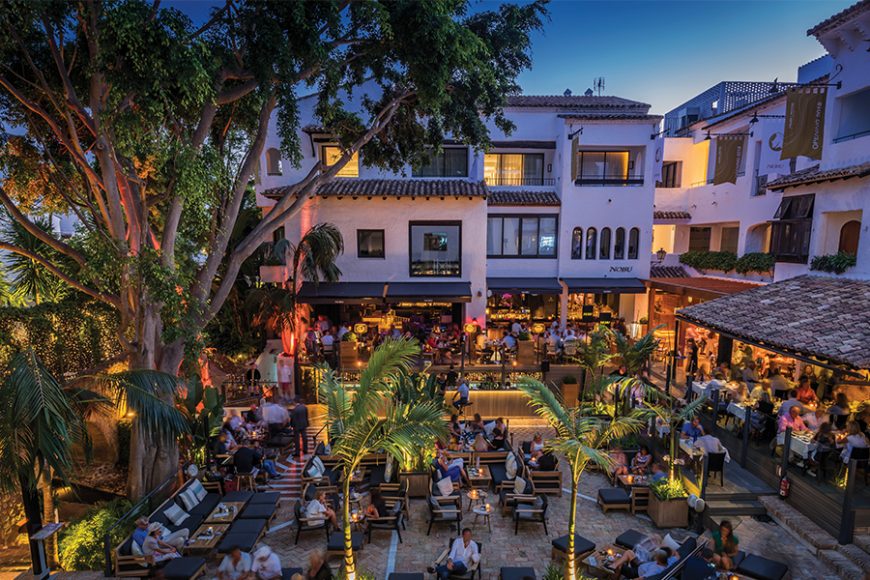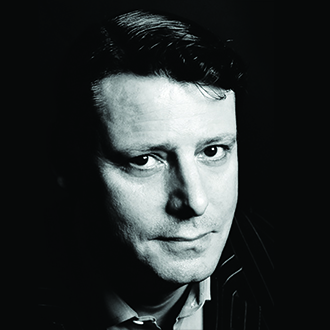When German Prince Alfonso of Hohenlohe-Langenburg arrived in Marbella, a humble fishing village on Spain’s Costa del Sol, on a motoring trip in the spring of 1947, he could scarcely have imagined what the vacation resort he was about to establish would become.
From its modest origins in the 1950s as a laid-back, liberal playground for well-heeled, slightly bohemian Europeans in what was still Franco’s nationalist Spain, Marbella would become an international jet-set destination in the 1980s. In those years, it more than held its own with resorts like St. Tropez on the French Riviera, or the Aga Khan’s newly developed Costa Smeralda in Sardinia. Marbella was hip and Marbella was happening — and not just for Europeans. Each August, cosmopolitan, sophisticated Americans would fly in on the twice-weekly TWA New York-to-Málaga, Spain service, to settle in for the monthlong summer season. There was dancing till dawn at the Marbella Club’s Mau Mau nightclub, after-parties after the after-parties and anybody who was anybody, from Phil Collins to Joan Collins, hung out.
But the decades that followed were not so kind to Marbella, which got carried away on the crest of its own celebrity. Massive building projects, totally unsympathetic of scale for the simple Mediterranean town, were facilitated by a corrupt mayor (who eventually went to jail), while other criminals called this part of the coast home, and gaudy excess became Marbella’s main characteristic. Petrodollars were everywhere and good taste went out the window.
On a hill opposite the Marbella Club, Saudi Arabian King Fahd built the second-largest private residence in Spain — a marble-and-gold replica of the White House, with its own mosque and private hospital attached — and retained a full-time staff of 200, even though he only ever visited four times in 20 years. When he did eventually drop in, after an absence of a decade, he brought a fleet of jumbo jets and 3,000 guests, along with 100 new Mercedes cars to drive them around in.
As the superyachts in Marbella’s Puerto Banús grew ever vaster and spiffier, so the original bohemian, summer-of-love Marbella began to disappear. The truly “beautiful people” people stayed away. The last TWA nonstop back to New York took off in 1990.
But 25 years later, Marbella is back. The beaches are clean, crime has virtually disappeared and hotel standards are by and large superb. And the 7½-mile Paseo Maritimo, or seafront promenade, which runs from the heart of the town all the way to Puerto Banús at Marbella’s western edge, is one of the most beautiful seaside walks in Spain. Most important, the characteristic that brought the first guests to Prince Alfonso’s original Marbella Club 60 years ago remains essentially unchanged, namely a gorgeous Mediterranean climate with 320 days of sunshine a year and balmy, dama de noche-and jasmine-scented nights under a velvet, starry sky.
So, 65 years after opening, the Marbella Club Hotel is still going strong. It’s an enchanting property with rooms in the main hotel, right on Marbella’s so-called Golden Mile, or in heavenly little (and not-so-little) Andalusian cottages, which dot the bougainvillea road leading down to the sea, and the hotel’s glamorous beach club, still the ne plus ultra of Mediterranean beach clubs.
But there are alternatives, too. And the newest kid on this prime real estate, first-line, oceanfront block is the one which swept me off my feet when I was lucky enough to stay for three nights earlier this year. Nobu Hotel Marbella opened just 18 months ago, a luxury subsection of the already well-established and utterly lovely Puente Romano hotel, a neighbor of the Marbella Club. If you’re in town at all, frankly this is where you want to be. Set around an ancient Roman bridge, still intact, from which the resort takes its name, Puente Romano is a brilliant recreation of an Andalusian village, complete with a ravishing small church and one of the best beaches on the Costa del Sol.
What Nobu Hotel does is to take the Puente Romano experience and add its minimalist style, along with a dash of latter-day Spanish pizzazz. The rooms are fresh and inviting, with virgin-white wicker furniture, hand-carved tables, satiny hardwood floors that are a joy to glide over in bare feet, and amazingly comfortable beds with the smoothest, most luxurious white sheets you will ever have the pleasure of sliding between.
The air-conditioning hums and bathrooms, which are enormous, have been planned with the kind of meticulous care that we are coming to expect from this exceptional hotel group. (Nobu will open another dozen hotels worldwide in 2020). A straightening iron sits alongside the regular hairdryer (how’s that for thoughtfulness?) and the highest-quality Natura Bissé products. And as for the Japanese toilet with its, ahem, full array of cleaning settings, this could provide hours of fun for the sitter, perhaps on a rainy day — not, of course, that Marbella has them very often.
But no matter how seductive the rooms, or bathrooms, with their ocean or garden or mountain views, and corridors with fashionable Smeg fridges full of complimentary snacks and beverages, Marbella is all about the outdoors. At Nobu Hotel Marbella you can swim in three dreamy pools or hang out on the beach, with its full complement of beach sports and activities. You can rent bikes, or go jogging and, of course, you can play tennis. The on-site tennis club is a major European tennis center boasting 10 regular courts, including a 2,000-seat “center court” and two paddle tennis courts, where international tournaments are regularly played.
And at Nobu’s spa, which is run by Six Senses and is one of the best on the Costa del Sol, treatments run the gamut, from a 30-minute manicure to a 24-karat gold, age-defying facial, to Rasayana detox body-wraps to a traditional royal hammam experience.
But wonderful as the facials are (and they are wonderful), and walloping as the tennis club is (and if there is a better-appointed or better-equipped tennis club in all of southern Europe, please, please drop me a line on a postcard and tell me about it), what none of this really tells you is how ravishingly lovely Nobu Hotel Marbella is.
Because this place is a paradise, with its cobbled streets, winter-flowering lavender and walkways bordered by oleander and hibiscus. Everywhere you look there are miniature courtyards and typically whitewashed Andalusian walls, exotic palms and trickling streams. And as for the air, it’s so pure you want to breathe it in and bottle it. With the Sierra Nevada Mountains behind and the sparkling Mediterranean ahead — on a clear day you can see the Rif Mountains of Morocco on the horizon — this place is a paradise.
There is shopping, too, rather good shopping indeed, either in the charming old town of Marbella with its geranium-filled alleyways, or in the altogether swisher Puerto Banús, with its humungous yachts. (They have not decreased in size since the years of wanton extravagance.) The hotel’s Tesla will whisk you to either locale and bring you back home again afterwards, since nobody in their right mind wants to attempt to park anywhere on this stretch of the Costa del Sol, where parking spaces are even harder to come by than in midtown Manhattan.
But don’t eat in town, at least not until you’ve tried the nosh back at the ranch. Because this being a Nobu hotel — the hotel group has evolved organically from Nobu Matsuhisa and Robert De Niro’s international restaurant partnership — food is taken very seriously here. In Nobu Hotel Marbella’s Plaza, a charming Spanish courtyard which becomes fully tented in the cooler winter months, a sleek branch of Nobu, where the Spanish Albariño grape seems to the perfect match for ngiri sushi or black cod miso, vies with Spanish gluten-free restaurant Celisioso, the Italian Serafina and local chef Dani Garcia’s eponymous Michelin-starred restaurant for your attention.
And there are other options too, like the Sea Grill down by the beach and El Chiringuito, Puente Romano’s take on a rustic beach shack restaurant, practically on the beach. It draws a chic daytime beach crowd, and a no-less chic, dressed-down, low-key crowd at night.
For the terminally active, Marbella is also a golfer’s paradise. There are seven courses virtually on the doorstep. And it is perfectly feasible, at least in spring and late fall, to swim in the Mediterranean in the morning and ski in the Sierra Nevada Mountains near Granada in the late afternoon. Culture vultures will somehow fit in a visit to Granada’s Alhambra in between.
When King Fahd died in 2005, the town of Marbella went into official mourning for three whole days. On his last visit to the town, the king had personally spent more than $100 million in a weekend. Now that Marbella has returned to be the lovely seaside town it was always meant to be, you don’t need to be a king or an oligarch to enjoy it, and the warm Andalusians will still welcome you with open arms.
For more, visit marbellaclub.com and marbella.nobuhotels.com.



